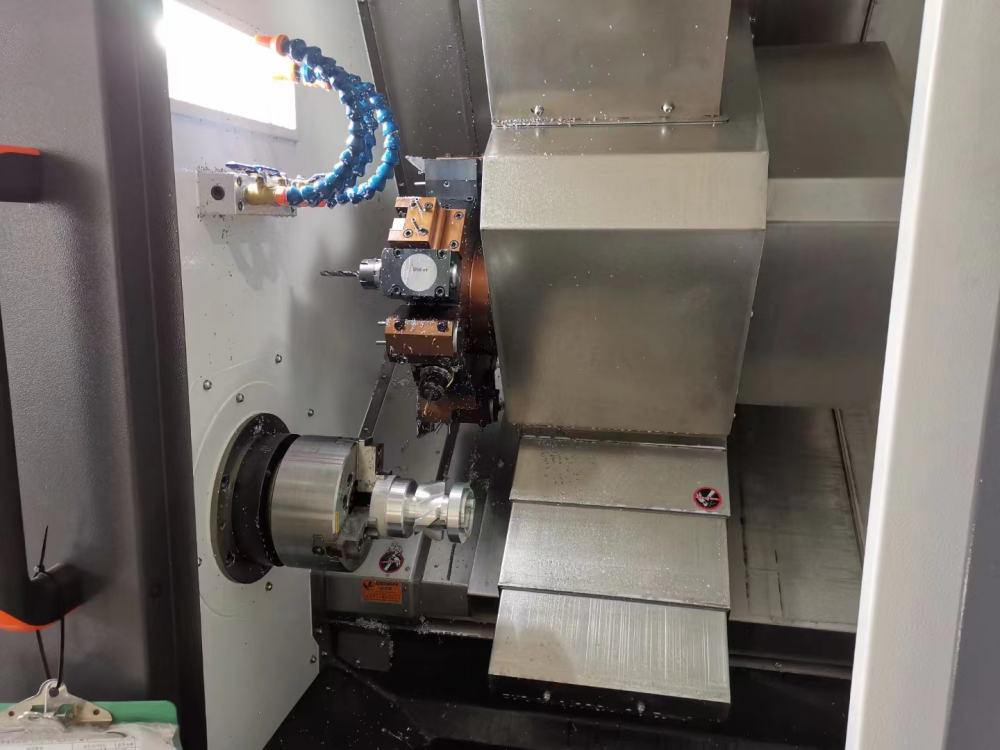Understanding Dual Spindle CNC: Elevating Precision and Efficiency in Machining
Dual spindle CNC (Computer Numerical Control) machines are transforming the landscape of manufacturing by offering enhanced capabilities for precision machining. These advanced systems are equipped with two separate spindle units, allowing them to perform multiple operations simultaneously or in quick succession, significantly improving productivity and efficiency in machining processes.
One of the primary benefits of dual spindle CNC machines is their ability to execute complex machining tasks that traditionally required multiple setups. For instance, in a standard CNC lathe, a workpiece may need to be repositioned several times to complete various operations, such as turning, drilling, or milling. In contrast, a dual spindle CNC can often complete these tasks in one continuous operation, reducing setup times and minimizing the risk of errors associated with repositioning. This efficiency not only accelerates production cycles but also enhances the overall quality of the finished product.
Another critical advantage is the ability to perform simultaneous machining operations. For instance, while one spindle is actively cutting a workpiece, the other spindle can be preparing the next piece for machining. This parallel processing capability maximizes throughput and minimizes idle time, making dual spindle CNC systems highly effective for high-volume production environments.
Precision is paramount in the manufacturing industry, and dual spindle CNC machines are designed to maintain strict tolerances, often within microns. With advanced feedback systems and high-quality tooling, these machines ensure that each operation is executed with exceptional accuracy. This level of precision is particularly valuable in industries such as aerospace, automotive, and medical device manufacturing, where even the slightest deviation can lead to significant quality issues or operational failures.
Moreover, the versatility of dual spindle CNC machines is noteworthy. They can be configured for a wide range of materials and machining applications, from simple turning operations to intricate multi-axis milling tasks. This adaptability allows manufacturers to respond quickly to changing market demands and to take on diverse projects without the need for extensive reconfiguration or investment in additional equipment.
In summary, dual spindle CNC technology represents a significant advancement in machining capabilities. By facilitating simultaneous operations, reducing setup times, and ensuring high precision, these machines are invaluable assets in modern manufacturing. The implementation of dual spindle CNC systems can lead to improved operational efficiency, higher product quality, and ultimately, increased competitiveness in the ever-evolving industrial landscape. As manufacturers seek to optimize their processes, understanding the benefits and functionalities of dual spindle CNC machines will become increasingly essential.
One of the primary benefits of dual spindle CNC machines is their ability to execute complex machining tasks that traditionally required multiple setups. For instance, in a standard CNC lathe, a workpiece may need to be repositioned several times to complete various operations, such as turning, drilling, or milling. In contrast, a dual spindle CNC can often complete these tasks in one continuous operation, reducing setup times and minimizing the risk of errors associated with repositioning. This efficiency not only accelerates production cycles but also enhances the overall quality of the finished product.
Another critical advantage is the ability to perform simultaneous machining operations. For instance, while one spindle is actively cutting a workpiece, the other spindle can be preparing the next piece for machining. This parallel processing capability maximizes throughput and minimizes idle time, making dual spindle CNC systems highly effective for high-volume production environments.
Precision is paramount in the manufacturing industry, and dual spindle CNC machines are designed to maintain strict tolerances, often within microns. With advanced feedback systems and high-quality tooling, these machines ensure that each operation is executed with exceptional accuracy. This level of precision is particularly valuable in industries such as aerospace, automotive, and medical device manufacturing, where even the slightest deviation can lead to significant quality issues or operational failures.
Moreover, the versatility of dual spindle CNC machines is noteworthy. They can be configured for a wide range of materials and machining applications, from simple turning operations to intricate multi-axis milling tasks. This adaptability allows manufacturers to respond quickly to changing market demands and to take on diverse projects without the need for extensive reconfiguration or investment in additional equipment.
In summary, dual spindle CNC technology represents a significant advancement in machining capabilities. By facilitating simultaneous operations, reducing setup times, and ensuring high precision, these machines are invaluable assets in modern manufacturing. The implementation of dual spindle CNC systems can lead to improved operational efficiency, higher product quality, and ultimately, increased competitiveness in the ever-evolving industrial landscape. As manufacturers seek to optimize their processes, understanding the benefits and functionalities of dual spindle CNC machines will become increasingly essential.
Related Blog













